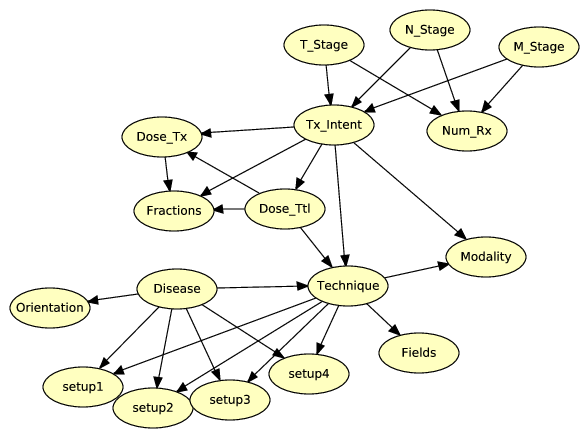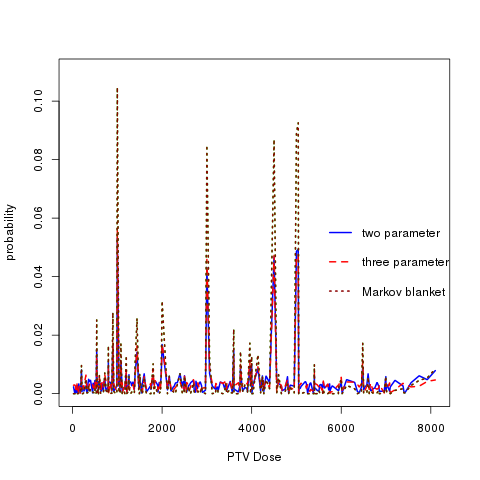Bayesian Networks for Error Detection in Radiation Oncology
Our current status has been a proof-of-principle Bayesian network for checking treatment plans. This work mined data from the UW's Mosaiq database and included a preliminary validation against human plan review. The initial results are promising and the first publication has recently been published by the journal Physics in Medicine and Biology.
To date, this work has been funded by a federal R18 grant from the Agency for Healthcare Research and Quality. Our proposal for the upcoming time frame is based on the most critical research tasks that are needed to establish a firm basis for this method, namely those involved in the algorithms and validating the concept. Our preliminary ideas for work that would be appropriate for the near future are as follows:
Expanding size of the predictive network to include more variables from the EMR
Previously we were somewhat restricted in the variables we could extract from Mosaiq and the computing power needed to process the data for use in the BN. The data-mining needs to be expanded in scope. We have started this and are exploring the type and source of computing power and possible applications of "big-data" techniques needed for probability extraction.
Validate against other clinical centers
The work to date has been based on the UW clinical database. It is important to validate this tool against data from other centers. Our current plan is to work with outside researchers to mine their database and to perform the same data extraction process and network development. We will compare the different networks and investigate the sources of differences.
Test ability of the predictive network to evolve as practice changes
In addition to being able to account for different practices at different sites, an effective system should evolve as practice changes. We will use the UW data to track changes the new practices that have been introduced in the last three years.
Expanded benchmarking using simulated errors
One way to validate and benchmark the predictive BN is to test it against the performance of human plan checkers. We did this in our initial work and it is included in the publication. Under this task we will devise a more realistic set of test plans.
Validating against data from the UW incident learning system
We will compare the correlations of variables in our BN with the actual findings of the UW incident reporting system, which has over 3,000 detailed incident reports collected over 3 years of clinical operations. Our long term goal will be to use value-of-information metrics to identify most likely connections in the BN.

